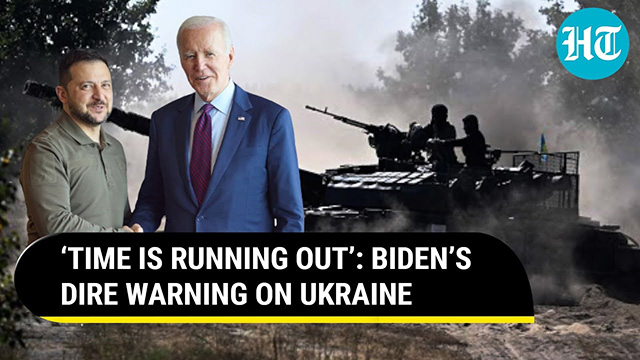
Western supporters are at a critical decision point and face a fundamental question: How can further Russian advances on the battlefield be stopped, and then reversed? – writes at ‘Foreign Affairs’ Dara Massicot, a Senior Fellow in the Russia and Eurasia Program at the Carnegie Endowment for International Peace. She was previously a Senior Policy Researcher at the RAND Corporation and a Senior Analyst of Russian military capabilities at the Department of Defense.
After capturing the ruined city of Avdeevka, Russian forces are moving forward fitfully in other areas along the front. Russian advantages in manpower, materiel, and defense production have grown in the past year, whereas U.S. ammunition deliveries have been throttled and are at risk of being curtailed almost entirely because of an impasse over funding in the U.S. Congress. Supplies of critical munitions for frontline Ukrainian units are dwindling, and soldiers are being forced to ration. Some units are experiencing significant manpower shortages.
The current battlefield dynamics have no single cause; they are mostly rooted in decisions that were made since the fall of 2022. When Russia mobilized its war economy, the West did not, and Ukraine could not.
When Russia constructed a network of defensive fortifications hundreds of miles long and multiple layers deep, Ukraine did not. Russia obtained more than a million (by some estimates, three million) artillery shells and thousands of drones from its partners, including Iran and North Korea. The West could not match that, having already reached the bottom of the barrel of similar resources. Moscow has gone to great lengths to regenerate personnel and replenish its forces, whereas Kyiv has yet to fully mobilize.
Without a surge in Western military aid and major changes to Kyiv’s strategy, Ukraine’s battlefield position will continue to worsen until it reaches a tipping point, possibly by this summer. On the present course, in which Ukrainian ammunition and manpower needs are not met, Ukrainian units are likely to hollow out, making Russian breakthroughs a distinct possibility.
To create an effective strategy that capitalizes on Russia’s weaknesses, Western policymakers and observers need to see the Russian military for what it is now: not the hapless, broken, depleted force that many wished it would be by now but a still dangerous organization advancing in Ukraine.
There are few locations left across the frontline, however, that are as heavily defended as Avdeevka was, meaning that future Russian advances may come more easily. Furthermore, Russian weaknesses will matter very little if depleted Ukrainian units can no longer mount a defense, or if they cannot rapidly replicate the types of defenses that were constructed at Avdeevka over ten years.
Russia’s two main advantages are its remaining weapons and manpower. In 2023, Russia revived 1,200 tanks and 2,500 armored vehicles that were previously in long-term storage while producing only 200 new or modernized tanks.
The West has not kept pace with Russia’s ammunition production. Although Russia draws from its older ammunition stockpiles, it has also accelerated new artillery production. It is on track to produce two million 122-millimeter and 152-millimeter artillery shells by the end of this year. If the United States and the European Union hit their production goals, they intend to collectively produce about 2.6 million rounds, and not all of that will go to Ukraine. In early March, the Czech Republic announced that it could broker 800,000 artillery rounds for Ukraine from third parties, but delivery timelines are closely guarded.
Ukrainian air defenders have also had to ration their interceptor missiles. Russian missile attacks have grown more experimental and complex since late 2022, and Ukraine’s interception rates have declined as a result. In early January, Ukrainian officials said that lower-altitude air-defense systems around Kyiv could withstand only a few more large attacks.
Russia is now regenerating enough manpower to keep its lines stable and launch limited offensive operations through at least the rest of the year. After fending off Ukraine’s counteroffensive last fall, it introduced more troops into occupied Ukraine. For instance, Russian and Ukrainian forces in occupied Donetsk were roughly equal in September 2023; by February, Russia had a two-to-one advantage. Ukrainian commanders noted earlier this year that some Russian forces appeared better trained than they were last year.
Overall, it is a bad sign for Ukraine and its supporters that Russia has enough confidence in both its own abilities and Ukraine’s precarious position that it is accelerating attacks in the run-up to the Russian presidential election, in mid-March.
In other words, Russia is forecasting more battlefield wins.
read more in our Telegram-channel https://t.me/The_International_Affairs

 12:05 13.03.2024 •
12:05 13.03.2024 •






















